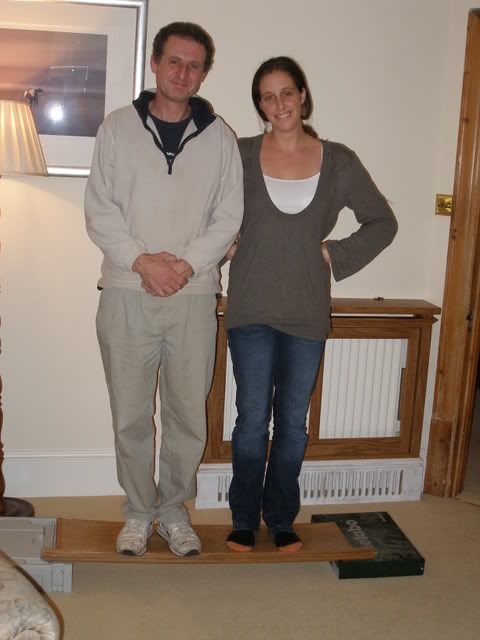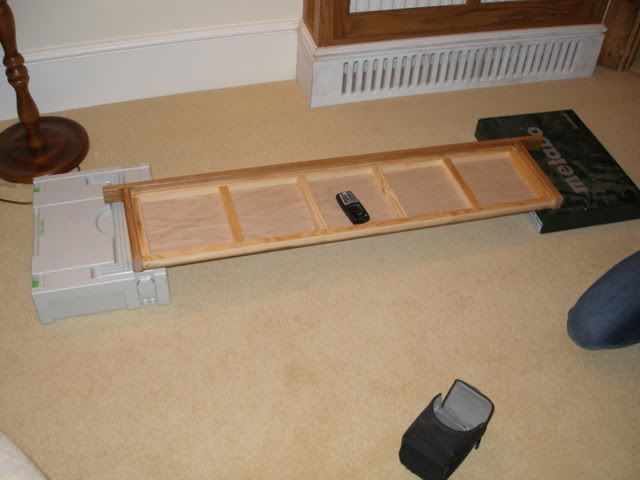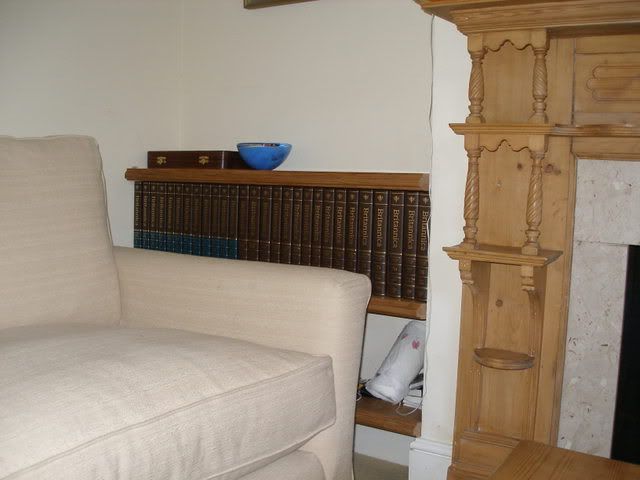leftistelf
Member
- Joined
- May 24, 2008
- Messages
- 57
My wife wants to move the books from the office into our living room, and has picked a spot that is in a niche - walls on three sides, with the objective to have the shelves run from the left wall to the right wall and to fit snuggly against the backwall. The length is about 3' and she wants to FILL each shelf with heavy books.
I could easily buy 2 shelving brackets/shelf, but the brackets generally interfere with the books below and they aren't as aesthetically pleasing.
So, I was considering cutting a dado in narrow pieces (1.5" or so) of hardwood, screwing the pieces to all 3 walls, and then sliding in 3/4" plywood shelf (with a few pocket screws to make sure the shelf doesn't slide out. Of course, it would be easier to just run a 1x1 around the walls and placing the shelf directly on top, which would also create the added benefit of not interfering with the top of the bookshelf. I could round over the exposed edge to keep things looking nice.
Regardless, my question is a matter of function - would the weight of books sitting atop 3' long shelves built of 3/4" plywood cause the shelf to bow? Should I just forgo the complex idea and buy a few shelving brackets?
Tools in toolbox: 1400 router and 55 saw. Probably adding the 125 rotex sander and a jigsaw.
Thanks!
I could easily buy 2 shelving brackets/shelf, but the brackets generally interfere with the books below and they aren't as aesthetically pleasing.
So, I was considering cutting a dado in narrow pieces (1.5" or so) of hardwood, screwing the pieces to all 3 walls, and then sliding in 3/4" plywood shelf (with a few pocket screws to make sure the shelf doesn't slide out. Of course, it would be easier to just run a 1x1 around the walls and placing the shelf directly on top, which would also create the added benefit of not interfering with the top of the bookshelf. I could round over the exposed edge to keep things looking nice.
Regardless, my question is a matter of function - would the weight of books sitting atop 3' long shelves built of 3/4" plywood cause the shelf to bow? Should I just forgo the complex idea and buy a few shelving brackets?
Tools in toolbox: 1400 router and 55 saw. Probably adding the 125 rotex sander and a jigsaw.
Thanks!



